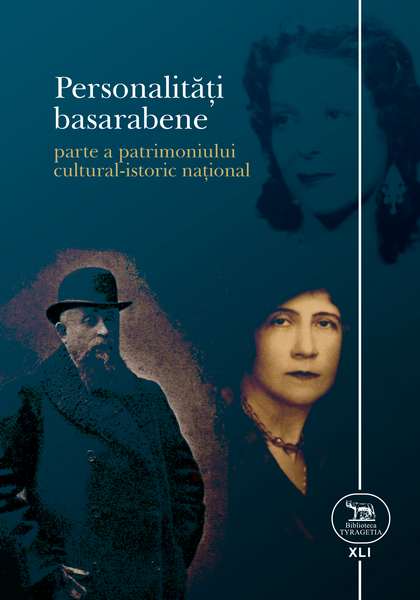The collection of studies and articles "Outstanding figures of Bessarabia as part of the national cultural and historical heritage (the 19th century - the first half of the 20th century)" includes the materials from the national scientific conference with international participation, held on September 19, 2023 within the project "Museum Heritage and Historical Memory: Research, Interpretation, Presentation" (number 20.80009. 0807.43), financed by the State program (2020-2023).
The event brought together more than 50 historians, museographers, journalists, as well as specialists in other fields (religion, education, architecture, medicine, management, culture) from Romania, Ukraine, France and the Republic of Moldova. During the event, topics related to the role of individuals in history and their contribution to the evolution of Bessarabian society in the 19th century and the first half of the 20th century were discussed.
The volume contains a selection of communications presented during the conference, which stood out for their thematic diversity, new methodological approaches, interdisciplinary studies, original documents, and so on. The articles are published in three languages, Romanian, English and Russian, and are accompanied by rich illustrative material.
Contents
Preface (Lilia Zabolotnaia)
Nicolae Fuștei
Metropolitan Gavriil Bănulescu-Bodoni, a diligent worker in the vineyard of the Church
Ana Grițco
The writings of Bessarabian historians in the holdings of the National Museum of History of Moldova (19th century - early 20th century)
Vera Serjant
Teachers of the Chisinau Real School in the collections of the National Museum of History of Moldova
Lilia Zabolotnaia
Forgotten figures of Bessarabia: the Tumarkin family
Marina Podlesnaia
Translator of Pushkin's creation Ion Buzdugan
Valentina Grabovscaia
The people around the family of Zamfir Ralli and A. S. Pushkin
Angela Lisnic
The contribution of the Aleinicov dynasty in the history of the city of Soroca
Ana Grimalschi
Dr. Vladimir Bogos - one of the youngest members of the Council of the Country: unpublished documents from private life
Victor Țvircun
Archpriest Mihail Berezovschi - enlightener and composer Bessarabian. New contributions to his biography
Francis Conte
Cristian Rakovski în Ucraina (1919-1923): un subiect actual?
Gabriela Dristaru
Leon T. Boga, historian of Bessarabia
Aurelia Trifan
Constantin Mimi's contribution to the implementation of a new winery model in Bessarabia
Serghei Pilipețchi
Maria Cebotari in Italian cinema
Ana Maria Rusnac
Eugenia Crușevan - the first female lawyer in Bessarabia
Alexandru Rusnac
Dumitru Gheorghița - composer and accordionist from Bessarabia
Anatol Petrencu
Professor Alexandru Moșanu - prominent personality of our nation
 31 August 1989 St., 121 A, MD 2012, Chisinau, Republic of Moldova
31 August 1989 St., 121 A, MD 2012, Chisinau, Republic of Moldova




 The side panels are elegantly decorated with refined cast-iron elements in the Art Nouveau style, displaying the brand name - "Ideal." The Polyglott model, featuring a bilingual keyboard patented in the United Kingdom by Max Klaczko from Riga, Latvia, was produced between 1902 and 1913, marking the first typewriter capable of writing in two languages. The "Ideal Polyglott" typewriter was actively sold in the Russian Empire and gained significant popularity in Poland, Bulgaria, and Serbia.
The side panels are elegantly decorated with refined cast-iron elements in the Art Nouveau style, displaying the brand name - "Ideal." The Polyglott model, featuring a bilingual keyboard patented in the United Kingdom by Max Klaczko from Riga, Latvia, was produced between 1902 and 1913, marking the first typewriter capable of writing in two languages. The "Ideal Polyglott" typewriter was actively sold in the Russian Empire and gained significant popularity in Poland, Bulgaria, and Serbia.














































